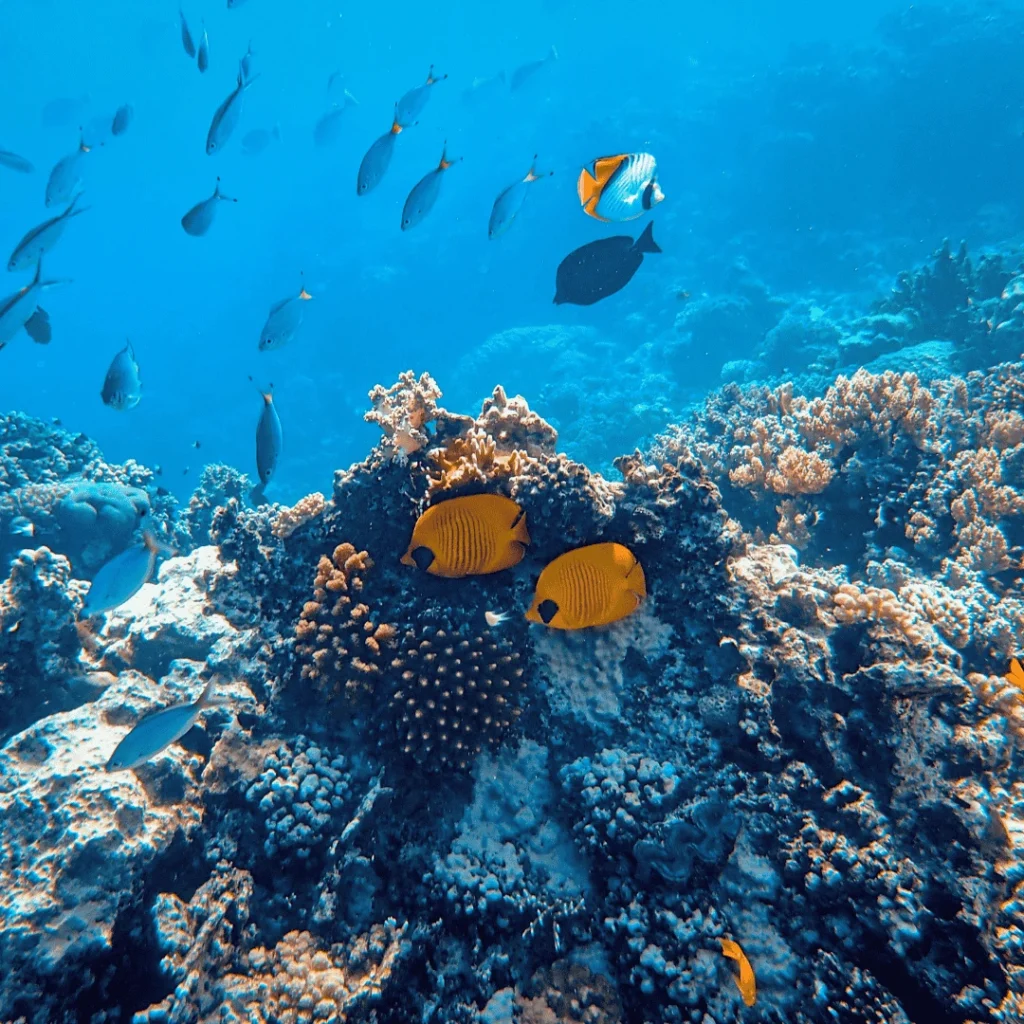Saltwater fish are the fish that live in saltwater. Saltwater is water that has a high amount of salt in it. Saltwater is in the oceans and seas. Marine fish is the other name for saltwater fish. Saltwater fish are in different colors, sizes, and shapes. They manage the salinity of the oceans with their osmoregulatory systems. Their kidneys and gills excrete high amounts of salt to maintain their internal balance. Saltwater fish have 20,000 species. Based on their diet, some species are herbivorous, carnivorous, and omnivorous. Among these species, we introduce you to the ten top saltwater fish.
Table of Contents
Clownfish: The Colorful Charm of Saltwater Fish
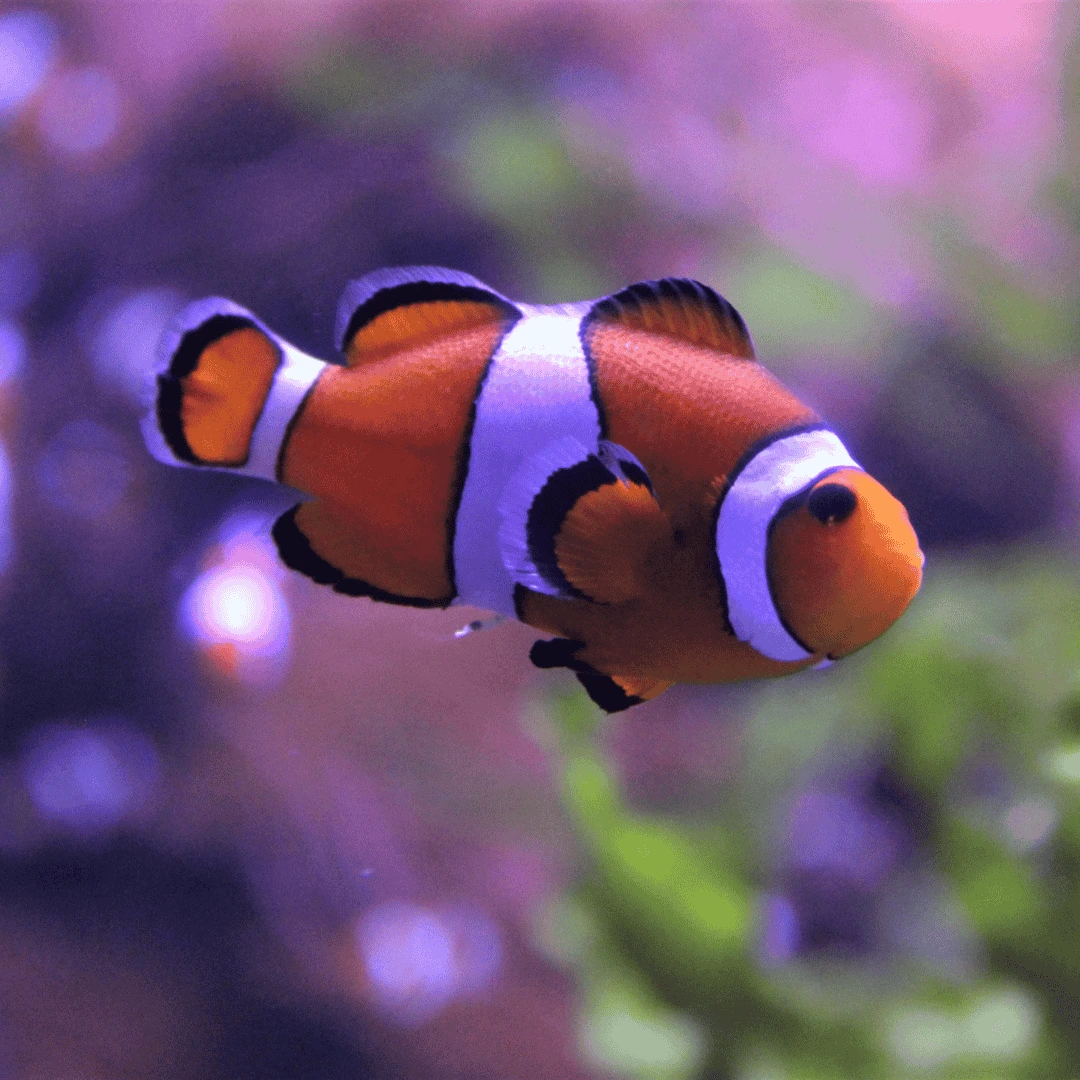
Clownfish are one of the most eye-catching fish found in saltwater. They are also known as anemonefish.
Size:
These are small in size, ranging from 2 to 5 inches.
Color:
They have an orange body color with bold white stripes that attract the viewers.
Diet:
They are naturally omnivores, with a diet that primarily consists of small invertebrates and algae.
Behavior:
These species are known for their playful behavior. Clownfish have different swimming patterns in the wild and aquariums.
Caring in Aquariums:
To care for them in marine aquariums, you need well-maintained saltwater tanks, quality water, a suitable temperature, and anemones.
Interesting Facts:
- They have a unique relationship with sea anemones. Sea anemones protect clownfish, and in return, they help them clean their host and attract prey.
- All clownfish are born male. When the dominant female dies, the eldest male will change their sex.
- They gained worldwide fame due to the film Finding Nemo.
Blue Tang: A Colorful Highlight Among Saltwater Fish

The Blue Tang is also known as the Regal Tang or Palette Surgeonfish due to its bright blue color body with a yellow tail and black “palette” design across its sides. Its scientific name is Paracanthurus hepatus.
Size:
Blue Tang is a medium-sized fish 10 to 12 inches.
Color:
Its body color is blue, and it has a beautiful yellow tail and a black “palette” design along its sides.
Diet:
The Blue Tang is primarily an herbivore. Its diet in the ocean includes algae and detritus. In aquariums, they eat seaweed, spirulina, and vegetables.
Behavior:
Blue tangs are often found in small groups at a young age, but adult blue tangs do not form large groups. They group together for safety or during feeding. Blue tangs change their body color based on their mood. When they are stressed, their body color changes to dull blue, and when they are happy, their body color changes to bright blue.
Caring in Aquariums:
Blue tangs are sensitive fish and active swimmers. The minimum recommended tank size for a single adult blue tang is 100-125 gallons. An aquarium must include live rock and a strong filtration system. The water temperature must be between 72°F and 78°F. The salinity should be between 1.020 and 1.025 SG.
Interesting Facts:
- The blue tang gained worldwide popularity from the character Dory in the animated movies Finding Nemo and Finding Dory.
- They can change their color.
- They control the growth of algae by eating them.
Mandarin: A vibrant Saltwater Fish
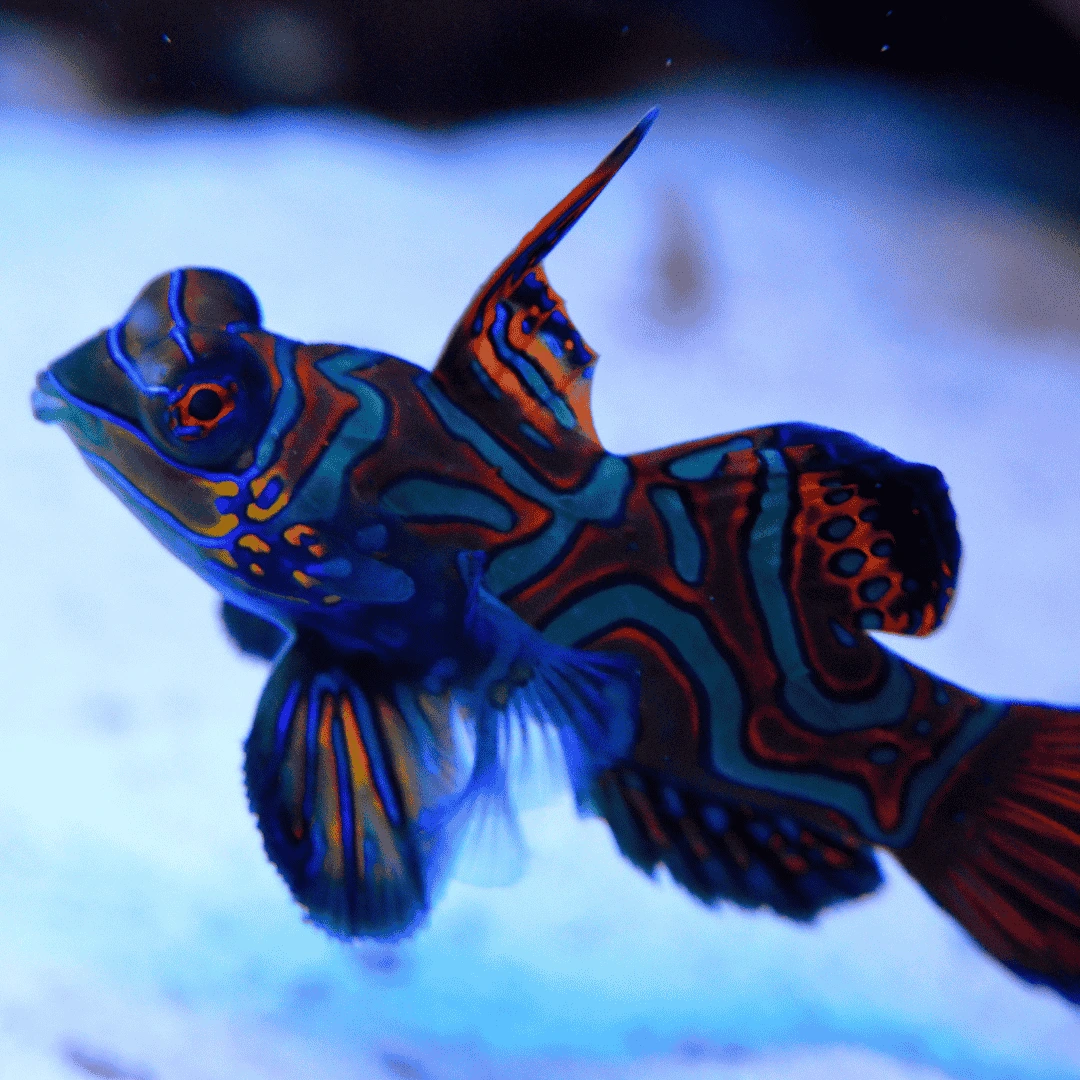
The mandarin fish is small but colorful. They are found in the Indo-Pacific region. They have large fins that make them a graceful appearance.
Size:
Mandarin fish size is approximately 3 inches.
Color:
They have blue and green bodies with orange or red markings.
Diet:
Mandarin fish eat small crustaceans like copepods. In the tank, they graze on live rocks.
Behavior:
They typically remain at the bottom of the tank for most of their time. They are peaceful and slow-moving fish.
Caring in Aquariums:
Mandarin fish are also sensitive fish and require specific attention. The minimum recommended tank size for adult mandarin fish is 30 gallons. An aquarium must include live rock and a strong filtration system. The water temperature must be between 72°F and 82°F. The salinity should be kept between 1.023 and 1.025 SG.
Interesting Facts:
- They have no scales on their body.
- They secreted foul-tasting for their defense.
- They engage in a “mating dance” during mating.
Yellow Tang: A Popular Saltwater Fish
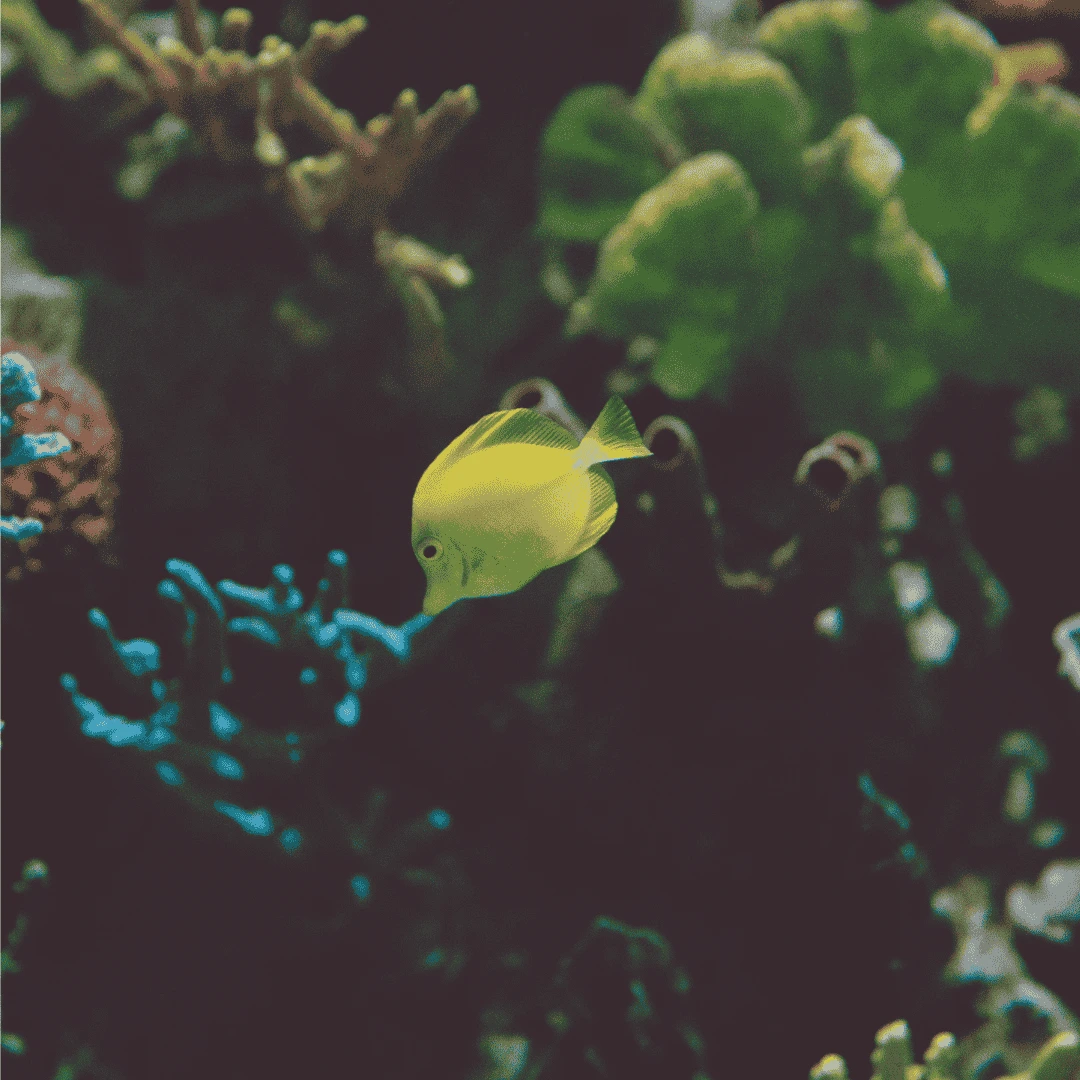
The yellow tang is a vibrant native to the warm waters of the Pacific Ocean. They have a disc-shaped body and require plenty of swimming space.
Size:
The size of the yellow tang is approximately 7 to 8 inches.
Color:
They are found in yellow color with dark blue or black margins around their eyes.
Diet:
Yellow tang eats algae in the wild and in aquarium-fed high-quality herbivore flakes, vegetables, and frozen foods like brine shrimp.
Behavior:
- They are recognized for their active swimming behavior.
- They are peaceful.
- They help smaller fish remove parasites and dead skin.
- They also change their color with their mood.
Caring in Aquariums:
Yellow tang also requires specific attention. The minimum recommended tank size for a single adult yellow tang is 75 gallons. An aquarium must include live rock and a strong filtration system. The water temperature must be between 75°F and 82°F. The salinity should be kept between 1.023 and 1.025 SG.
Interesting Facts:
- Their yellow color is not just for their beauty but also helps them to communicate with other fish.
- They change a slight color at night.
- They can live for 20 to 30 years.
Angelfish: Elegant Saltwater Fish
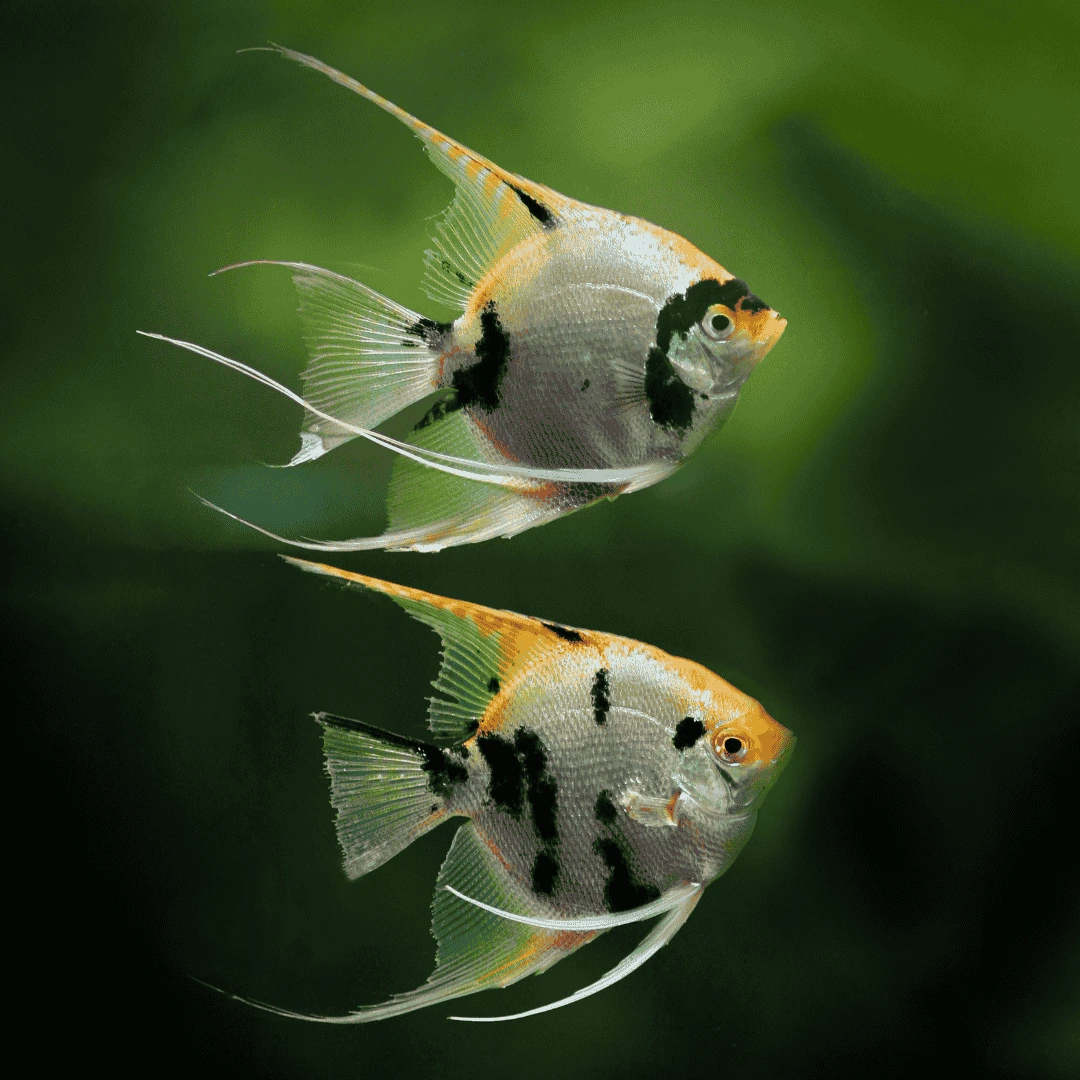
Angelfish are popular among freshwater and saltwater fish because of their stunning beauty and graceful swimming.
Size:
The size of angelfish in freshwater is approximately 6 inches and in saltwater is about 4-18 inches.
Color:
The color of angel fish varies widely depending on whether they are freshwater or saltwater fish. Freshwater angelfish are in silver color with black vertical stripes. Saltwater angelfish are bright and vibrant.
Diet:
The diet of angelfish varies depending on whether they are freshwater or marine species. Saltwater angelfish eats both plant matter and small animals.
Behavior:
The saltwater angelfish are active and bold. They can be territorial, especially towards other similar-looking fish. Some angel fish engage in cleaning behavior where they allow cleaner fish to remove parasites from their bodies. Some of their species change their color with age.
Caring in Aquariums:
Angelfish requires attention to their specific needs. The minimum recommended tank size for a single adult angelfish is 20 gallons. An aquarium must include live rock and a strong filtration system. The water temperature must be between 72°F and 82°F. The salinity should be between 1.023 and 1.025 SG. Angelfish enjoy live plants.
Interesting Facts:
- They are known for their distinctive triangular body shape and long flowing fins.
- Many species of angelfish can change their color.
- The maximum age of angel fish is 20 years.
Lionfish: Striking Saltwater Fish

The lionfish of saltwater is beautiful but dangerous. Their resemblance to lions gives him the name of a lionfish.
Size:
The average length of lionfish is between 12 to 15 inches.
Color:
They have maroon stripes alternating with white bands.
Diet:
Lionfish are carnivorous and feed on small fish, crustaceans, and mollusks.
Behavior:
They do not form large groups and prefer to hunt and live alone. They hunt both day and night. They use their venomous spines to ward off threats and defend themselves.
Caring in Aquariums:
Lionfish need extra attention for caring in aquariums and handling precautions due to their venomous spines. The minimum recommended tank size for a small lionfish species is 50 gallons and for larger species is 120 gallons. It must include live rock, caves, and a strong filtration system in an aquarium. The temperature of water must be between 72°F and 78°F. The salinity should be between 1.020 and 1.025 SG.
Interesting Facts:
- Lionfish are equipped with up to 18 venomous spines on their dorsal and anal fins.
- Single female lionfish can release up to 30,000 eggs every four days.
- In the wild, lionfish can live for up to 15 years.
Triggerfish: Bold and Unique Saltwater Fish
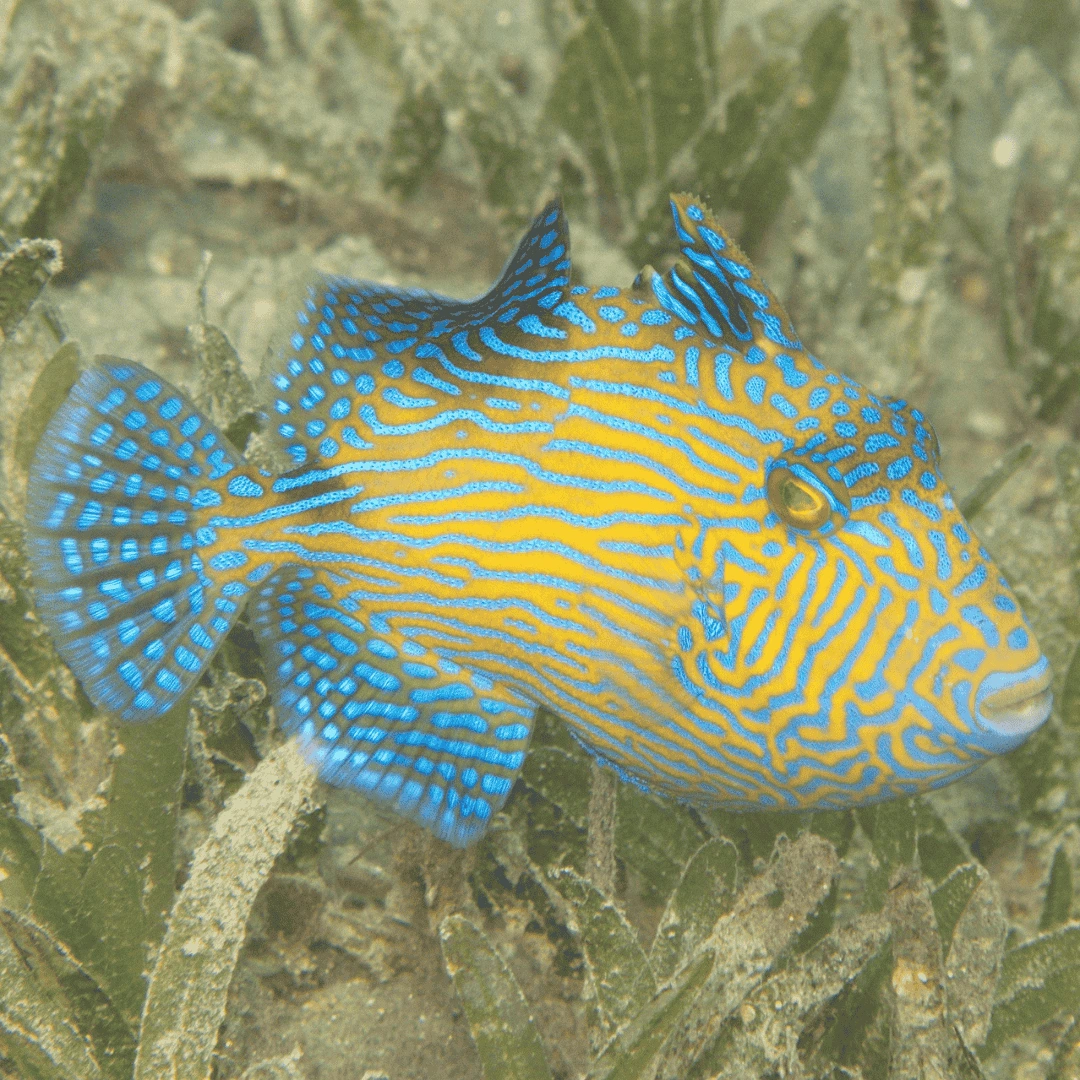
Triggerfish are part of the family Balistidae and are recognized for their unique shape and bright colors.
Size:
The size of triggerfish is about 7-30 inches depends upon the specie.
Color:
The color of triggerfish varies depends upon the specie like clown triggerfish has a black body with large white spots on its lower half, a yellow snout, and bright orange and white patterns on its face.
Diet:
Triggerfish are omnivorous and eats both plants and animal matter. In invertebrates they eats crustaceans, mollusks, sea urchins and worms. In vertebrates they eat small fish. They also eat coral and algae.
Behavior:
Triggerfish are highly territorial especially during breading season. They aggressively defend their nest from other fish. They are adept hunter. They use their powerful jaws to crack open the shells of crabs, sea urchins and mollusks. During reproduction, female dig nests in sandy areas, usually near coral reefs. When threatened, they use their unique dorsal fin “trigger”.
Caring in Aquariums:
Caring for triggerfish in an aquarium can rewarding, but it also requires attention to their specific needs . The minimum recommended tank size for a small trigger species is 100 gallons and for larger species is 200 gallons. Must include live rock, artificial caves, and strong filtration system in an aquarium. The temperature of water must be between 74°F and 82°F. The salinity should be kept between 1.020 and 1.025 SG.
Interesting Facts:
- They can raise and lock the first spine of their dorsal fin, making it difficult for predators to pull them out of crevices.
- Triggerfish have strong, sharp teeth that allow them to break open the shells of crabs.
- There are around 40 species of triggerfish.
- They have excellent eyesight.
Moray Eel: Mysterious Saltwater Fish

Moray eel belongs to the family Muraenidae. They are known for their snake-like appearance. They have elongated bodies with sharp teeth.
Size:
The size of the moray eel saltwater fish is about 2-13 feet depending upon the species.
Color:
The color of moray eels varies depending upon the species giant moray has a dark brown or greenish-brown body with darker spots, helping it camouflage in coral reefs.
Diet:
Moray eel is carnivorous and eats fish, crustaceans, cephalopods, mollusks, and worms.
Behavior:
Moray eels saltwater fish are quite territorial, often defending against other fish. They spend much of their time hiding in rock crevices. They are nocturnal means more active during the night. They are sometimes seen in pairs during breeding season. They have excellent eyesight and are highly aware of their surroundings.
Caring in Aquariums:
Caring for moray eels in an aquarium requires the following things. The minimum recommended tank size for a small moray eel species is 75 gallons while larger species require a minimum of 100 gallons. It must include live rock, artificial caves, and a strong filtration system in an aquarium. The temperature of water must be between 74°F and 82°F. The salinity should be kept between 1.020 and 1.025 SG.
Interesting Facts:
- Moray eels have a second set of jaws in their throat, known as pharyngeal jaws.
- Moray eels have sharp, backward-facing teeth that help them grip slippery prey.
- There are around 200 species of moray eel.
Butterfly fish: Graceful Saltwater fish
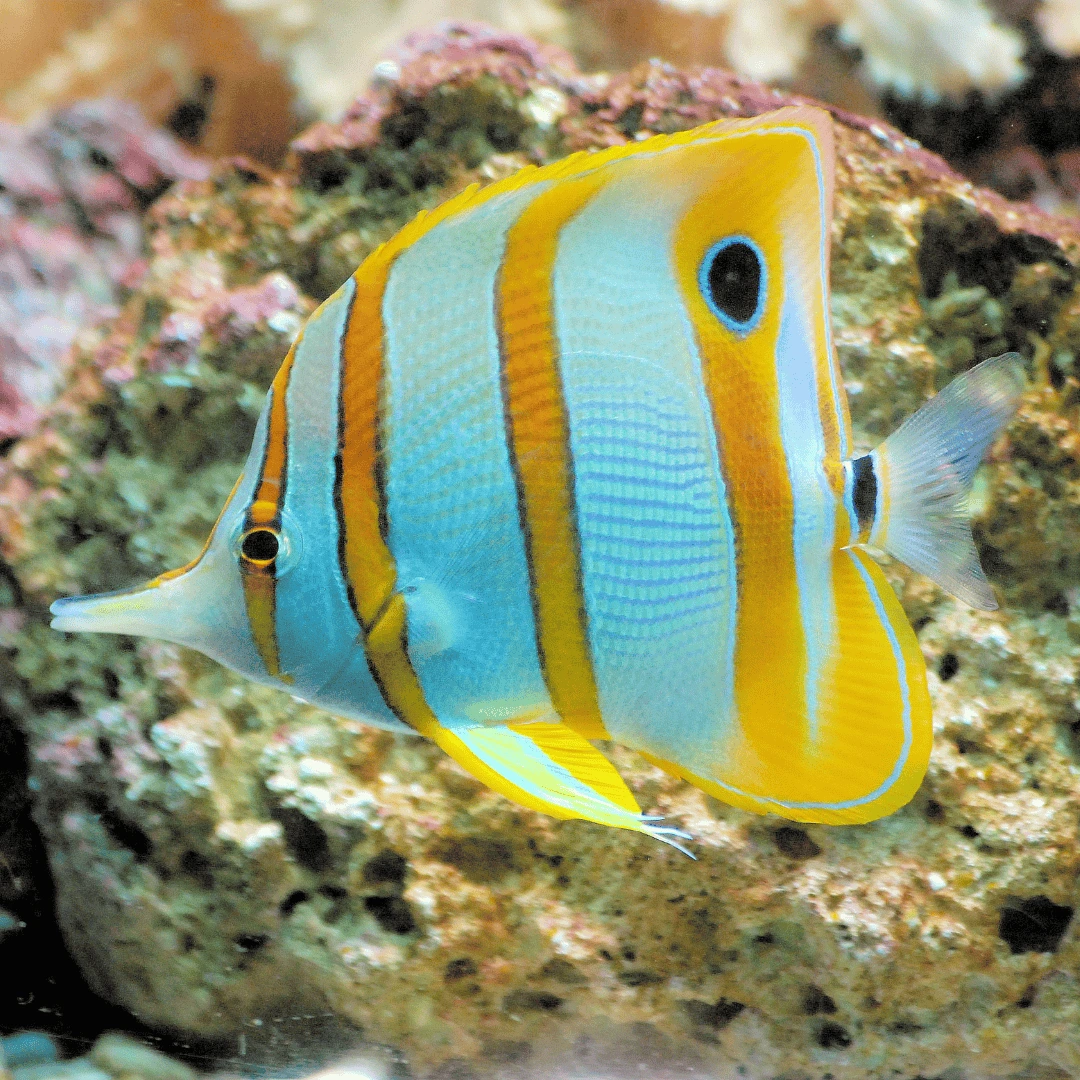
Butterfly fish belong to the family Chaetodontidae and are known for their vivid colors and patterns, which resemble the wings of a butterfly.
Size:
The size of butterfly fish ranges from about 4 to 19 inches, depending on the species.
Color:
The color of butterfly fish is a mix of bright yellow, white, and black shades, with orange and blue accents.
Diet:
The diet of the butterfly fish depends on the species and their habitat. Many species, especially those that live in coral reefs feed on coral polyps. Some species eat algae and small invertebrates.
Behavior:
Butterfly fish are often seen in monogamous pairs( male and female sticking together throughout their lives). Some species may form small groups especially when young. Some species of butterflyfish are territorial and will defend their home range from other fish. Some species have eyespot markings on their bodies, often near the tail that confuse the predators about the fish’s true head location. During breeding season males and females will swim in synchrony to attract mates.
Caring in Aquariums:
Caring for butterfly fish in an aquarium requires the following things. The minimum recommended tank size for small butterfly fish species is 75 gallons, while larger species require a minimum of 100 gallons. An aquarium for butterfly fish must include live rock, artificial caves, and a strong filtration system. The water temperature should be maintained between 74°F and 82°F, and the salinity should be kept between 1.020 and 1.025 SG.
Interesting Facts:
- Butterfly fish get their name due to the color and patterns that resemble the wings of a butterfly.
- Some butterfly fish have false eyespots near their tails that confuse predators.
- Butterfly fish often communicate with each other through body movements and displays.
- The maximum age of butterfly fish is 20 years.
- There are around 120 species of butterflyfish.
Wrasse: Diverse and Dynamic Saltwater Fish

Wrasses belong to the family Labridae. They are one of the most diverse families of marine fish, known for their variety in size, color, and behavior.
Size:
The size of wrasses saltwater fish is about 3-6 inches depending upon the species.
Color:
The colors of wrasses are bright blues, greens, reds, and yellows.
Diet:
Wrasses are carnivorous and eat invertebrates such as mollusks, crustaceans, worms, and sea urchins.
Behavior:
Wrasses saltwater fish can change sex during their lifetime. The process of changing sex in fish is known as protogyny. The most dominant female in a group can become male if the previous male dies or is removed from the group. Wrasses are typically active during the day and hide themselves at night in the sand.
Caring in Aquariums:
Caring for wrasses in an aquarium can be enjoyable but requires the following: the minimum recommended tank size for small wrasse species is 50 gallons, while larger species require at least 100 gallons. The aquarium must include live rock, artificial caves, and a strong filtration system. The water temperature should be maintained between 75°F and 82°F, and the salinity should be kept between 1.020 and 1.025 SG.
Interesting Facts:
- Some species of wrasses can change their color especially as they mature from juveniles to adults.
- Some species of wrasses can change female sex to male when their dominant male dies or disappears.
- In the wild, small species can live up to 5 years while large species can live up to 30 years.
- There are around 600 species of wrasses.
Faqs:
Q.1 Can I keep multiple species of saltwater fish together?
Ans. Yes, you can keep multiple species of saltwater fish together but understand the compatibility of species first.
Q.2 What are some beginner-friendly saltwater fish?
Ans. Some beginner-friendly saltwater fish include clownfish, yellow tang, and blue tang.
Q.3 What are some common saltwater mammals?
Ans. Common saltwater mammals include dolphins, whales, seals, sea lions, and manatees.

